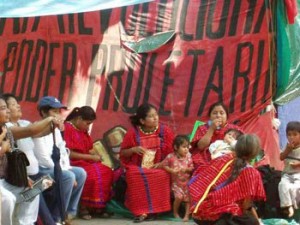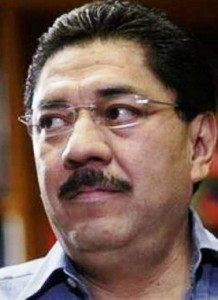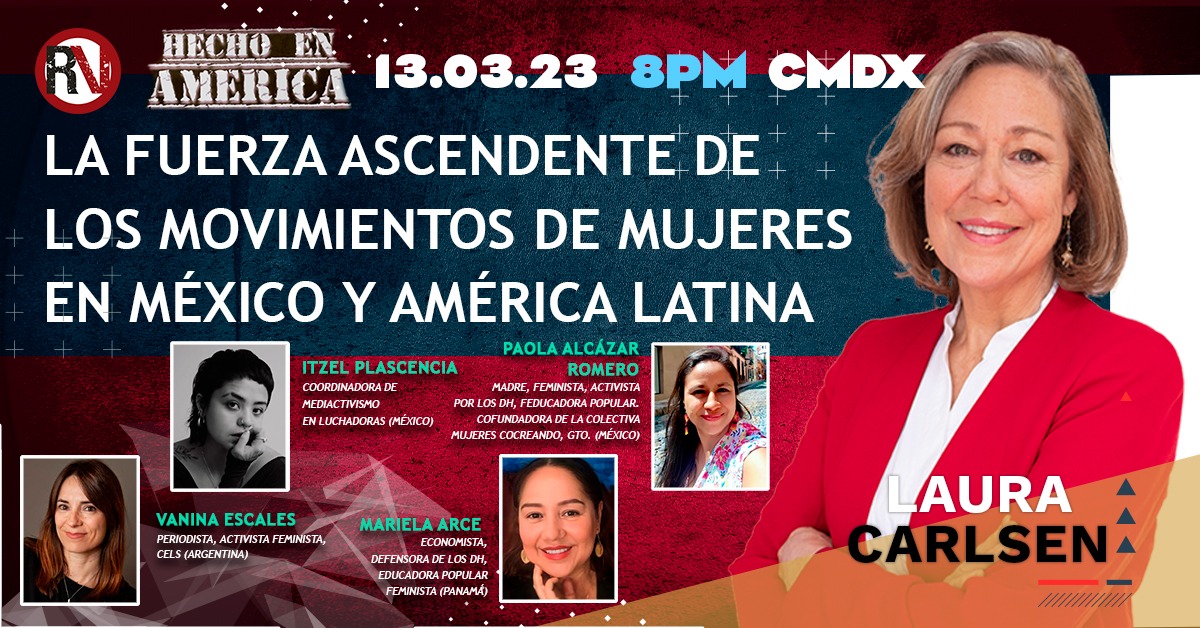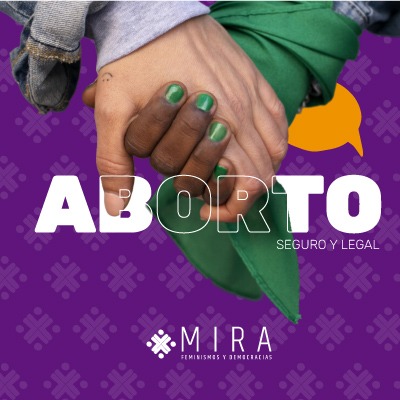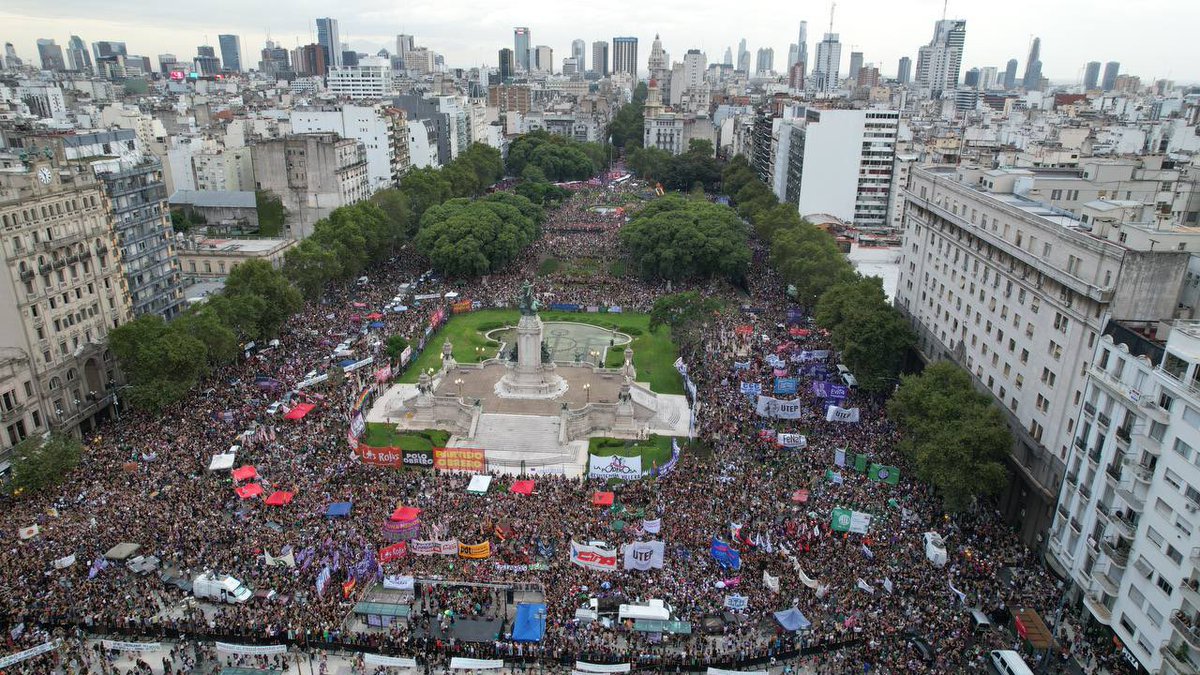When international human rights observers rounded a curve on a remote road in the southern Mexican state of Oaxaca, they found the way blocked by boulders. They decided going forward would be dangerous. But they didn’t know that going back would be deadly.
As the vans began to turn around, masked gunmen came down from the hills and opened fire on the vehicles. Some of the people scattered into the brush. Others got lucky and dodged the bullets. Two were murdered, shot in the head—Bety Cariño, of the Mexican rights group CACTUS and leader of the Mexican Alliance for Self-Determination and Finnish human rights observer Jyri Jaakola.
The rights activists were traveling to the village of San Juan Copala in the Triqui indigenous region of Oaxaca. The village had been surrounded and cut off by local paramilitaries from a group called UBISORT, reportedly founded by the party of the state government, the Institutional Revolutionary Party (PRI).
The caravan included journalists, state activists and international human rights observers who knew the risks, but decided to undertake the mission because that is the job of human rights defenders throughout the world. The lives of villagers were at stake and they saw a dangerous precedent to society of allowing a town to be held hostage by an illegal armed group without raising a voice.
Killings are a common occurrence in the Triqui region for those who defend indigenous rights and resources—scores of people have been assassinated, including in 2008 two women from San Juan Copala´s community radio station. After a paramilitary leader threatened the group to desist from entering the controlled territory, the leaders advised the state government of its intentions. The attack took place under the nose of the state government and with its prior knowledge of the risk.
Recycling Violence
How did a village lost in the Sierra Madre become a vortex of violence?
The Triqui region has seen way more than its share of violent conflict. Most researchers refer to the last decades of conflicts among groups of Triqui that split into warring factions with alarming frequency. But it goes further back than that. Since pre-Hispanic times, Triqui communities have been caught in a cycle of violence, fuelled by resource grabs, rebellion and repression. Through each stage of their bloody history, the same pattern repeats itself, as amply documented in a recent study by the Mixtec lawyer and researcher, Francisco Lopez Barcenas.
The cycle could have been stopped or at least spun down if the government had at any point carried out its mandate of administering justice to the indigenous people of the region. Instead it quelled the rebellions as outside interests bled the region. In 2007, the village of San Juan Copala broke from a government that had failed to protect its people and declared itself an autonomous municipality. The repression went into overdrive.
A State of Impunity
Knowing this history is key to understanding how an armed group could attack with intent to kill a group of international human rights activists and expect to get away with it. Layers of impunity and injustice have covered crimes in Oaxaca for years.
Oaxaca is no ordinary state. In 2006, Oaxacans took over the state capital demanding the ouster of PRI Governor Ulises Ruiz. For nearly six months, an unprecedented movement of unionized teachers, housewives, students, indigenous people, farmers and assorted other sectors of society held the city. Federal police were sent in to retake control as the governor remained in hiding but refused to resign. During those bloody months, 26 members of the protest movement were murdered and hundreds more captured, beaten and submitted to psychological torture.
In 2008 I went to Oaxaca as a member of an international human rights delegation that took testimonies of human rights violations in Oaxaca. We installed our team in a church hall and when we opened the doors, we were flooded with complaints. In four days we conducted over 150 interviews that painted a panorama of a human rights crisis, accompanied by impunity for actions of the state perpetrators.
The testimonies were heart wrenching and often tearful. These were not minor offences. Some dated back to the repression of late 2006, with reports of protestors being herded blindfolded into a helicopter and told they would be dumped into the Pacific Ocean—a practice of Mexico’s dirty wars of the seventies. More recent accounts poured in of grassroots leaders murdered or disappeared throughout the state, including the case of two leaders of the Revolutionary Popular Army who remain disappeared to this day, despite efforts by a Congressional mediating commission. The Commission has cited a lack of political will on the part of the federal government to resolve the case.
The public has lost confidence in the government to protect its rights. When we met with the state human rights commission, the commissioner stated his willingness to investigate all complaints but said the commission had received very few. The reason was not hard to find. When we asked complainants whether they had reported their cases, they unanimously replied no, saying they would never go through a state government that was complicit in the crimes themselves.
The murder of U.S. journalist Brad Will is perhaps the most well-known case and a classic example of the way impunity works in the state. Under international pressure, the state began an investigation that went nowhere despite forensic and eyewitness evidence that implicated hit men with ties to local government. Then, incredibly, a member of the protest movement was arrested for Will’s murder. After more international pressure stating that farcical justice was even worse than no justice, he was released, leaving the case back at square one–impunity.
Mexico’s Supreme Court ruled that Ruiz was responsible for grave violations of human rights in Oaxaca in the 2006 uprising. But no criminal charges or impeachment proceedings were initiated.
The last attack repeats the historic and contemporary cycles of violence. Outsiders once again covet the Triqui region, this time mining interests. Self-governing indigenous people get in the way of those interests. The targeting of the caravan sought explicitly to take out leaders of grassroots opposition to the state government and movements to protect natural resources. Bety Cariño was one of the state’s most active leaders of the anti-mining movement and efforts to defend indigenous rights.
Ulises Ruiz, accused of human rights violations
Human Rights and U.S. Indifference
The April 27 ambush managed to shock a nation accustomed to violence in the news. Drug war tolls of thirty or more victims a day are standard fare in Mexico. But the calculated assault on a human rights mission crossed some invisible line. Members of the European Parliament, the Finnish Embassy, and the United Nations Human Rights Commissioner have demanded a full investigation. Demonstrating the arrogance characteristic of his rule, Governor Ruiz announced he would carry out an investigation—of the migration papers of foreigners on the caravan.
Human rights violations in Mexico have been on the rise in the last few years, with a sixfold increase in complaints against the armed forces since the drug war was launched. Civilian deaths have increased in the context of drug war militarization. The nation faces a crisis of confidence in the government’s ability–or willingness–to provide even the most basic human security.
The U.S. State Department has ignored this crisis to justify support of the failed drug war of President Felipe Calderon. Security aid to Mexico under the Merida Initiative required that a report on human rights be presented to Congress showing progress in ending impunity for crimes committed by the armed forces, an end to torture and progress in the Brad Will murder. The State Department delayed presenting the report until last year when it submitted a report that did not show progress and simply interpreted the requirement to be the elaboration of a report.
Security aid to police and armed forces that violate human rights consistently empowers a system of violations. Human rights training by U.S. forces will make no difference whatsoever in that equation—the problem is obviously not a lack of training but a lack of political will. As long as the same political forces that commit the violations receive support and aid, they are encouraged to continue practices that damage society and destroy lives
Mexico today is at a critical juncture. Its fragile institutions have been shaken by their inadequate response to electoral fraud in the 2006 presidential elections and to the inequality and injustice of daily life. The justice system remains bound to the interests of a weak federal government that fears popular protest, and to state and local governments, in cases like Oaxaca, controlled by despots. Corruption by drug cartels adds to the impunity.
Mexico can either take up the challenge to strengthen democratic institutions, or it can fall back into rule by force and authoritarianism. The U.S. government’s blinkered focus on security issues while ignoring systematic human rights violations encourages the former. The U.S. government should focus on fighting transnational organized crime within its own borders and channel aid to Mexico to development projects that strengthen human rights, citizen empowerment, peace-building and wellbeing.
International groups must take action
A recent letter from Mexican organizations states:
“We repudiate this aggression, without precedents in our country, and we hold the governor of the state of Oaxaca, Ulises Ruiz Ortiz, and the political leaders of the organization UBISORT responsible for the climate of violence in the region. We demand that those responsible for this attack be punished. We also demand guarantees of the safety and the lives of the survivors of the caravan; an immediate halt to all acts of aggression against the Autonomous Municipality of San Juan Copala, its local officials, and its inhabitants; the immediate withdrawal of the blockade around the municipality; and respect for the right to self-determination of all peoples. We reject the use of violence as a pretext for militarization of the Triqui Zone and demand a halt to the actions of paramilitary groups.”
International organizations and individuals should follow the lead of the signers of this letter and demand a full investigation. The role of the Oaxaca state government under Ulises Ruiz must be fully clarified.
Impunity is not merely a lack of justice and due punishment; it is an incubator of violence and crime. When it becomes state policy, rule of law crumbles.
International human rights organizations and citizens must demand—in the name of Bety, Jyri, and the other members of the delegation—that the murderers who carried out this vile attack and their accomplices be brought to justice. Anything short of a full explanation and application of the law in the case of the San Juan Copala attack will allow the violence to continue and add yet another stain to Mexico’s already dismal human rights record.
Laura Carlsen (lcarlsen(a)ciponline.org) is the director of the Americas Program (www.americas.org) for the Center for International Policy in Mexico City.
For more information
San Juan Copala: The Roots of Violence by María Dolores Paris Pombo
https://www.americas.org/archives/2187
Building Civil Society Among Indigenous Migrants
http://americas.irc-online.org/am/1366
Oaxaca: After the Barricades

